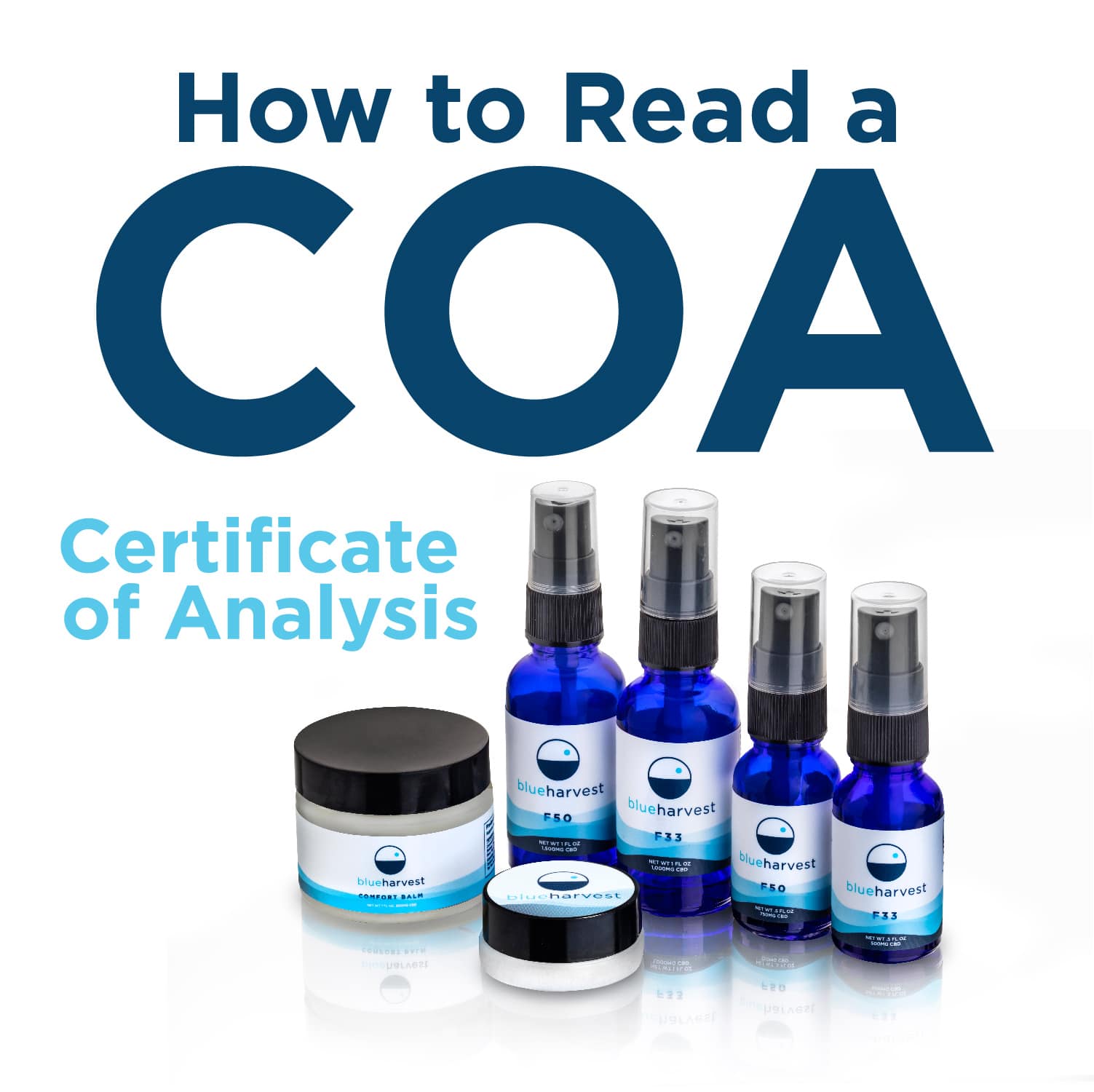Reading a COA
As new CBD companies flood the market, it becomes more and more difficult to trust the legitimacy of the products you’re purchasing. Fortunately, many are adopting the best practice of publishing a Certificate of Analysis (“COA”) for each product they are selling.
What is a COA?
A certificate of analysis is a report that verifies the active ingredients in a given product. For CBD products, this means a report that lists percentages of cannabinoids, which consumers can use to verify the accuracy of the ingredients listed on their product or verify if a product is actually full or broad spectrum. A COA is not reliable unless its completed by a third party.
Where to find a COA?
Most companies keep their COA online, and can be found with a simple product search. Other products come with a QR code on the packaging, which can be scanned to view the COA. If the COA can’t be found online or in QR code, the next best option is to contact a company. Send them a simple email requesting the COA. If they refuse or are unable to provide a COA, the product isn’t reliable, and you should avoid that company. For example, Blue Harvest directly links the COA from our product description. In addition, we have a QR code directly on our packaging.
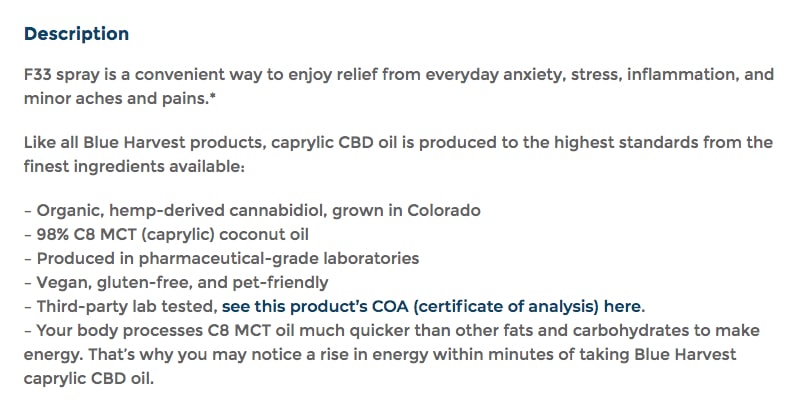
How to read a COA?
First thing to look for is the third-party verification. Here is an example of a COA for Blue Harvest completed by The Spott, a licensed testing facility in Kalamazoo, Michigan. The Spott is part of the Confident Cannabis national network of lab facilities.
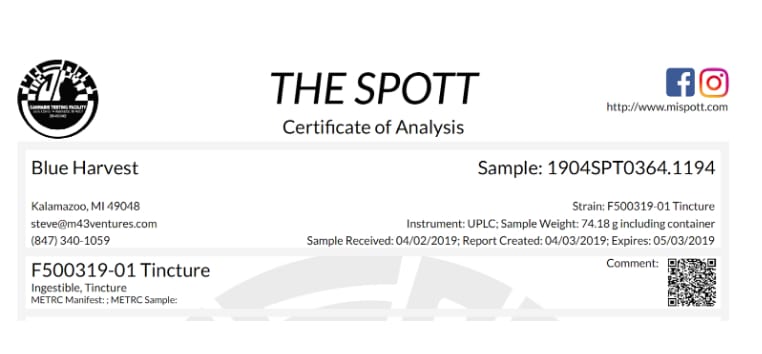
Next, you will want to verify the batch number on the COA matches the batch number on your label. In the example above, F500319-01 is the batch number, this number can also be found on the bottle label. Matching batch numbers between COA and bottle labels indicates that your CBD manufacturer is serious about testing transparency.
After reviewing the top part of the COA for information such as a testing facility, CBD manufacturer, strain, testing date, and batch number. Find the section of the COA which looks like this:
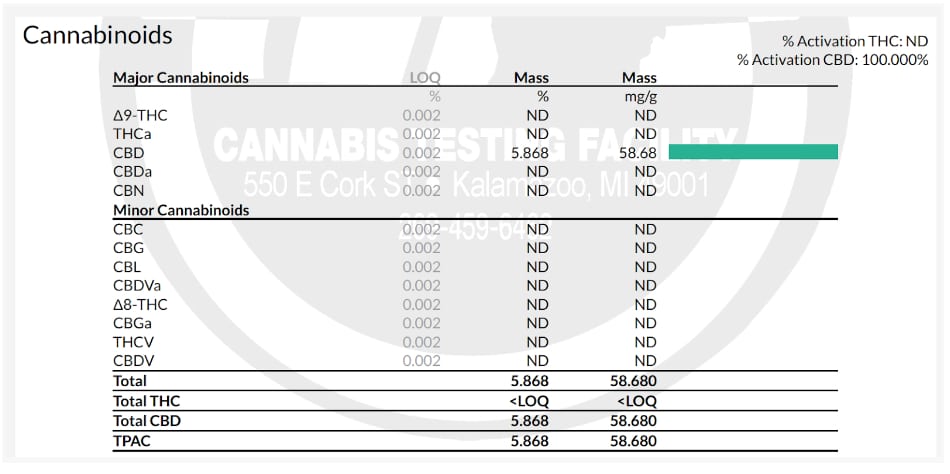
This is a profile that lists the different amounts of each cannabinoid. “ND” means that a compound was not detected over the limits of detection. There might be other abbreviations meaning the same thing, these other abbreviations will also be listed at the bottom of the document for clarification.
The most important statistic on your COA is activation. Notice in the upper right-hand corner of the Blue Harvest COA. Activation means that the CBD in your product will work as advertised – the closer to 100% the better. All cannabinoids need to be activated through a process known as decarboxylation, which basically removes a carbon atom from the compound through heat. The activation percentage lets you know whether your CBD manufacturer did its job. On the other hand, if you are reviewing activation % for flower or vapes, you want to see an activation % of close to zero.
What are Cannabinoid Percentages?
In the example above, there are two columns, the first is the percentage of Mass (or weight) the second column is mg/g. (which is approximately the same as mg/ml). According to the COA, there is 5.8% CBD by weight and 58.58 mg of CBD per ml. On its bottle label, Blue Harvest advertises that it has 5% CBD and 50 mg CBD/ML, so the COA checks out.
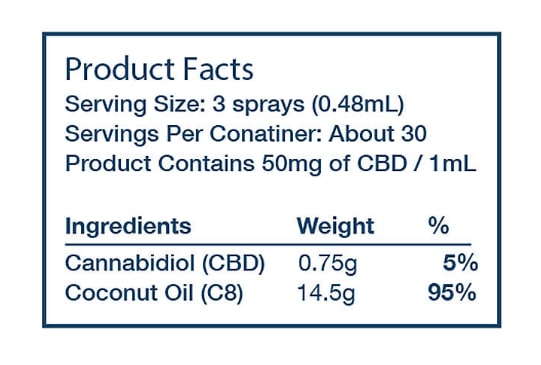
NOTE: Laboratories (and State laws) publish at +/- 15% margin of error their testing results. So COAs are not totally accurate, but rather indications that your active ingredient is present.
If the COA doesn’t show results as milligrams per product, then it’s necessary to do some math in order to verify the amounts of cannabinoids in the product. Multiply the amount of ML in the bottle by the mg/g column, this will give you total amount of CBD by product. For example, Blue Harvest bottle is ½ oz, which is 14.7ml. 14.7X58.68=862.6 mg of CBD in the bottle, which is 14.9% more than the 750mg that blue harvest advertises for its F50 product.

Things To Keep in Mind When Reading a COA
Although products are tested for contaminants, a COA shouldn’t list any. Additionally, it’s important to cross verify the product ingredients with the COA. If a COA looks sound, but the ingredients listed on the product are different, then you should stay away from that product. It’s also important to understand the products you’re looking into when checking the COA. For example, a product that’s full spectrum should have several amounts of cannabinoids listed, while a product that’s isolate should only have an amount of CBD listed, with “ND” for the remaining cannabinoids. Blue Harvest is an isolate, therefore, only CBD is detected.
CBD is everywhere, and not all CBD is created equal. Be sure to do your research!
#thebodyknows
